The Supermicro X10DRi is a dual socket Intel Xeon E5-2600 V4 / V3 motherboard. With an industry standard EATX form factor, this motherboard is meant for broad compatibility. Unlike many motherboards we see in custom form factors, the X10DRi is meant to be compatible with a wide variety of chassis. These boards are meant to be retail “building blocks” for anyone building their own servers as well as for VARs/ system integrators to build custom solutions upon. Originally launched with the Intel Xeon E5-2600 V3 series, this motherboard support Intel Xeon E5-2600 V4 chips with a simple BIOS update.
Test Configuration
Our test platform was a Supermicro X10DRi EATX motherboard upgraded for Xeon E5 V4 support via a simple BIOS upgrade. This is the same configuration we used in our Intel Xeon E5-2699 V4 benchmarks piece so you can see performance figures there.
- CPU: Intel Xeon E5-2699 V4
- Motherboard: Supermicro X10DRi
- Memory: 128GB – 8x Samsung 16GB DDR4 2400MHz ECC RDIMMs / 256GB 8x Samsung 32GB DDR4 2133MHz ECC RDIMMs
- SSD: 1x Intel DC S3700 400GB
- Operating System: Ubuntu 14.04.3 LTS
A quick word about the BIOS. We have been through generations of Intel processor upgrades using the same socket and Supermicro motherboards. If you are buying a single piece of the motherboard it is best to ensure that it has E5 V4 compatible BIOS. If you do not have a board with E5 V4 compatible BIOS or are trying to upgrade an existing E5 V3 system, you will need to use the E5 V3 processors to flash the BIOS, then add in the E5 V4 CPUs. As you can see from our test system below, you will want a BIOS version of 2.0 or newer to support the Intel Xeon E5-2600 V4 series.
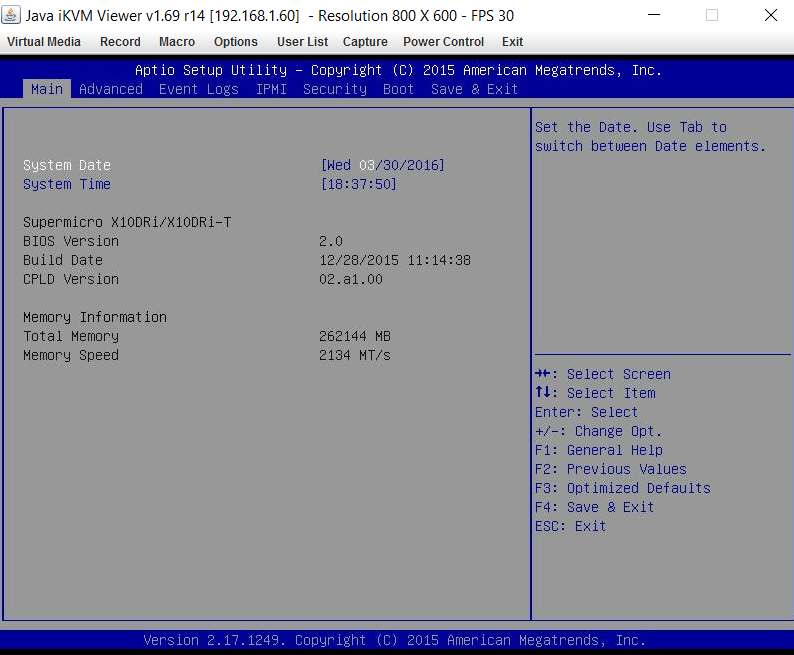
Supermicro X10DRi Overview
The layout for the Supermciro X10DRi is a very standard EATX (12″ x 13″) layout. It uses standard front to back airflow and all heatsinks, RAM, connectors and headers are aligned for that airflow. A major benefit of this design is that it is compatible with an enormous number of chassis, both tower and rackmount.
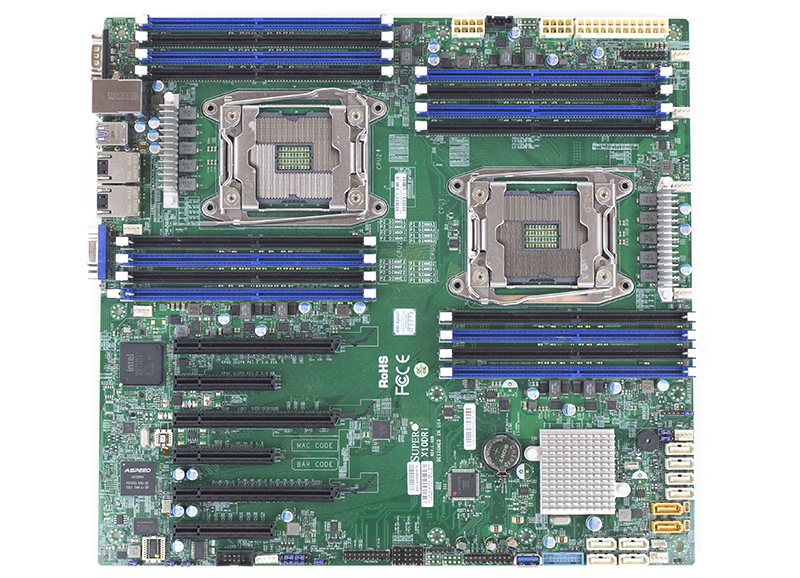
Around the two LGA2011-3 sockets we can see eight DDR4 DIMM slots per socket for a total of 16 onboard. That gives this motherboard a capacity of 1TB using ECC DDR4 RDIMMs (16x 64GB) or 2TB using pricey DDR4 3DS LRDIMMs (16x 128GB.)
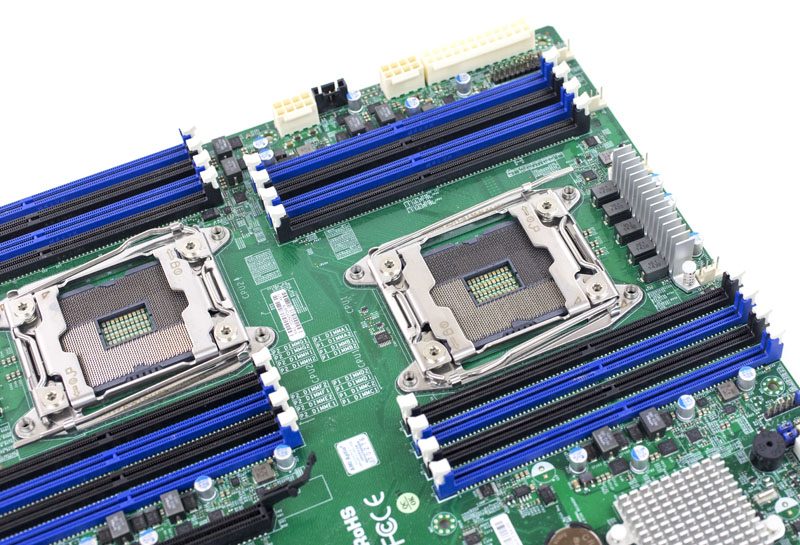
One can also see that the sockets are designed for narrow ILM thermal solutions. You can read about standard v. narrow ILM in our guide. This same form factor has been widely used since Sandy Bridge (E5 V1) processors came out in Q1 2012 so it is easy to find appropriate thermal solutions.
We do also see two 8-pin CPU power connectors next to the 24-pin ATX power connector. These are standard power connectors for dual socket motherboards so the X10DRi will be compatible with many power supplies on the market.
In terms of storage, the Supermicro X10DRi utilizes the Intel C612 PCH (under the pictured heatsink) to deliver 10x SATA III connectors. Two of these in orange are designed for SATA DOMs either with or without a power cable depending on the SATA DOM.
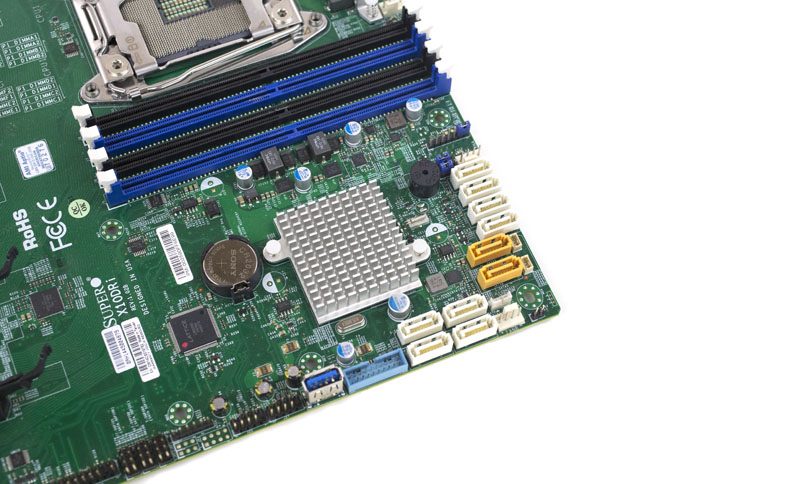
Along with the SATA ports there is a USB 3.0 internal header as well as a USB 3.0 front panel header. The internal Type-A header is useful for embedded installations where a USB device is used. This can be for the VMware ESXi hypervisor, leaving disks for datastores or as a required USB device for Nutanix or other applications.
Aside from the storage expansion, there are six PCIe expansion slots onboard. There are three PCIe 3.0 x16 slots and three PCIe 3.0 x8 slots. These slots combined expose 72 of the platform’s maximum 80 PCIe 3.0 lanes. Unlike many motherboards on the market, these slots are wired for full speed operation across every slot.
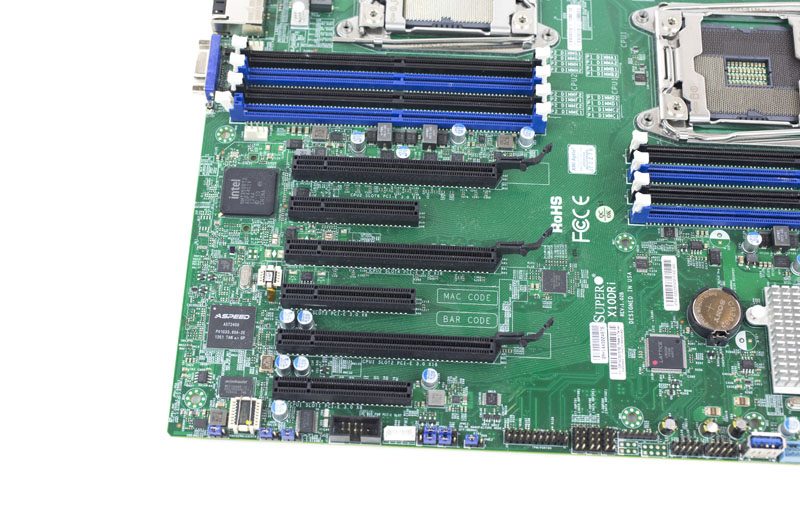
One can see the Intel i350 dual port network chip on the edge of the motherboard nearest the rear IO. That is a significantly higher-end solution than the i210-at found on lower end motherboards. The i350 does support features like VMDQ (virtual machine device queues) which can reduce I/O overhead in virtualized environments.
We can also see an ASPEED AST2400 onboard providing BMC duties.
On the rear I/O panel there are a total of nine ports. Two Gigabit Ethernet ports belong to the i350 controller while one is used for out of band management of the AST2400 BMC. We also see four USB ports, two USB 2.0 and two USB 3.0 ports.
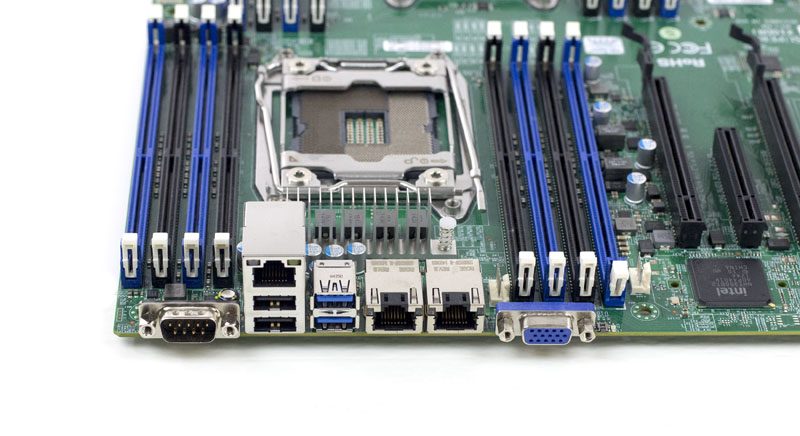
In terms of legacy support, there are standard 9-pin serial and analog VGA connectors rounding out the rear I/O portfolio.
Supermicro X10DRi Thermal Imaging
To capture these images we utilize our FLIR Ex series professional thermal imaging camera and turned off FLIR’s MSX enhancements so we can see hotspots clearly. We put the system under 100% CPU load for a period of 24 hours to let “heat soak” set in prior to taking the images.
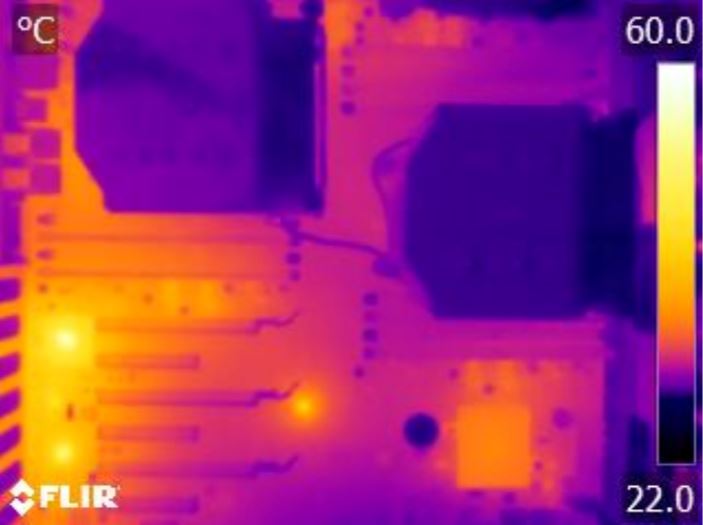
First off, the coolers we are using do push a lot of air. That keeps the dual E5-2699 V4 chips very cool. The two biggest hot spots we see are the Intel i350 network controller and the ASPEED AST2400 BMC. Both are running in the 42C range, well within operating tolerances.
Supermicro Management
Supermicro’s IPMI and KVM-over-IP as described a few times on this site, allows for a lot of deployment flexibility. Things such as fan speeds, chassis intrusion sensors, thermal sensors, and etc. can be monitored remotely. Alerts can be setup to notify the admins of issues. Beyond this, the functionality also allows for remote power control. One can do remote power up, power down, and reset of the server in the event that it becomes unresponsive.
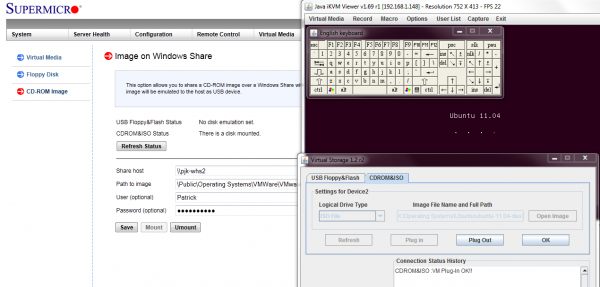
Another important feature is the ability to remotely mount CD images and floppy images to the machine over the dedicated management Ethernet controller. This keeps maintenance traffic off of the primary Intel NICs. At the same time it removes the need for an optical disk to be connected to the Supermicro motherboard.
The latest revision of Supermicro’s BIOS has a great feature: the BMC IP address shows up on the post screen! This is a super feature because if one has a KVM cart hooked up to the system, it gives an indicator of which machine one is connected to during post.

Supermicro does include KVM-over-IP functionality with the motherboard. We have been testing servers from HP, Dell, Lenovo and Intel that all required an additional add-in key to get this functionality. It is an absolute time and money saver in the datacenter and other vendors should follow Supermicro’s lead in this space.
Conclusion
Overall the Supermicro X10DRi makes an excellent server building block. The motherboard fits in a large number of cases due to its standard EATX footprint. Beyond the physical size, the fact that it has six PCIe 3.0 slots exposing 72 PCIe 3.0 lanes makes it an excellent choice for those looking to build a highly customized platform. With the out of band management features and the i350 network controller, the onboard network and management capabilities are good. Although we would have liked to see more onboard networking, Supermicro does offer variations of the X10DRi with additional 1GbE and 10GbE options so the focus here is a lower cost motherboard (around $425 street price) with a quality 1GbE controller which makes sense.

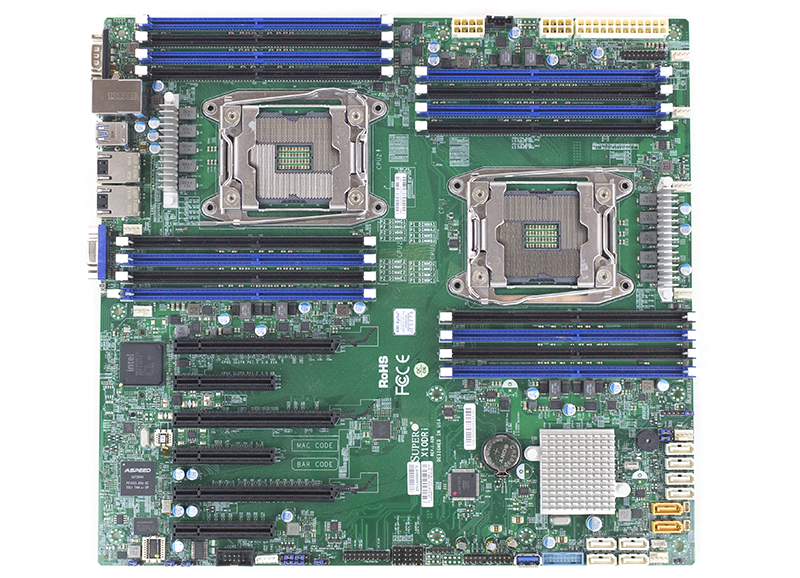



Can you identify the coolers you’re using in the test? I’m searching for thermal solutions for use with this motherboard, but haven’t been able to find any conclusive compatibility guidelines.
Simple BIOS update might not be that simple if you don’t have spare E5 v3 CPU
If you do not, you can purchase a key for around $20 and use the IPMI management to do it. New stock released in most of 2016 and later will support V4.
Can you explain what key. I have purchased this motherboard with E5-2620 COU and cannot power it on. I suspect this is related to the old BIOS which does not support generation 4th of the Xeon.